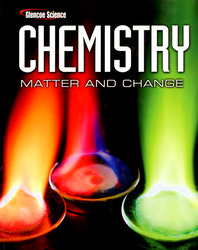1 <a onClick="window.open('/olcweb/cgi/pluginpop.cgi?it=jpg::::/sites/dl/free/007874637x/514710/figure_14_2_page_477_2008_CMC.jpg','popWin', 'width=264,height=296,resizable,scrollbars');" href="#"><img valign="absmiddle" height="16" width="16" border="0" src="/olcweb/styles/shared/linkicons/image.gif"> (70.0K)</a> A) electrons B) the dispersing medium particles C) protons D) the thixotropic particles 2 A) oxygen B) carbon dioxide C) nitrogen D) water vapor 3 2 H5 OH) in a solution of 47.5 g of ethanol in 850 g of water?A) 0.021 B) 0.18 C) 3.032 D) 0.98 4 <a onClick="window.open('/olcweb/cgi/pluginpop.cgi?it=jpg::::/sites/dl/free/007874637x/514787/fig14_8.jpg','popWin', 'width=NaN,height=NaN,resizable,scrollbars');" href="#"><img valign="absmiddle" height="16" width="16" border="0" src="/olcweb/styles/shared/linkicons/image.gif"> (27.0K)</a> A) 15m B) 282m C) 30.9m D) 15.7m 5 12 H22 O11 )?<a onClick="window.open('/olcweb/cgi/pluginpop.cgi?it=jpg::::/sites/dl/free/007874637x/514787/fig14_7.jpg','popWin', 'width=NaN,height=NaN,resizable,scrollbars');" href="#"><img valign="absmiddle" height="16" width="16" border="0" src="/olcweb/styles/shared/linkicons/image.gif"> (49.0K)</a> A) 0.000584 M B) 2.00 M C) 0.584 M D) 200 M 6 1 /P1 = S2 /P2 A) 0.878 g/100 L water B) 3.51 g/100 L water C) 0.293 g/100 L water D) 2.63 g/100 L water 7 <a onClick="window.open('/olcweb/cgi/pluginpop.cgi?it=jpg::::/sites/dl/free/007874637x/514787/fig14_12.jpg','popWin', 'width=NaN,height=NaN,resizable,scrollbars');" href="#"><img valign="absmiddle" height="16" width="16" border="0" src="/olcweb/styles/shared/linkicons/image.gif"> (44.0K)</a> A) sucrose is an ionic compound B) both water and sucrose are polar molecules C) both water and sucrose are molecular compounds D) both water and sucrose have high melting points 8 f for water = 1.86°C/m.f = Kf x m.A) 39.7 g/mol B) 58.4 g/mol C) 46.2 g/mol D) 62.0 g/mol 9 <a onClick="window.open('/olcweb/cgi/pluginpop.cgi?it=jpg::::/sites/dl/free/007874637x/514787/fig14_20.jpg','popWin', 'width=NaN,height=NaN,resizable,scrollbars');" href="#"><img valign="absmiddle" height="16" width="16" border="0" src="/olcweb/styles/shared/linkicons/image.gif"> (38.0K)</a> A) The vapor pressure would be the same, because the solute does not affect colligative properties. B) The vapor pressure would be higher, because the dissolved particles would be smaller. C) The vapor pressure would be lower, because there would be twice as many dissolved particles. D) The vapor pressure would be twice as much, because there would be twice as many dissolved particles. 10 <a onClick="window.open('/olcweb/cgi/pluginpop.cgi?it=jpg::::/sites/dl/free/007874637x/514787/tab14_5.jpg','popWin', 'width=NaN,height=NaN,resizable,scrollbars');" href="#"><img valign="absmiddle" height="16" width="16" border="0" src="/olcweb/styles/shared/linkicons/image.gif"> (41.0K)</a> A) water B) benzene C) carbon tetrachloride D) ethanol





